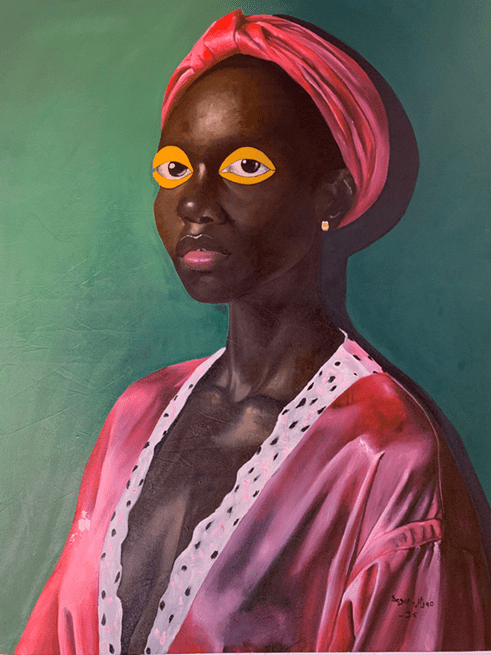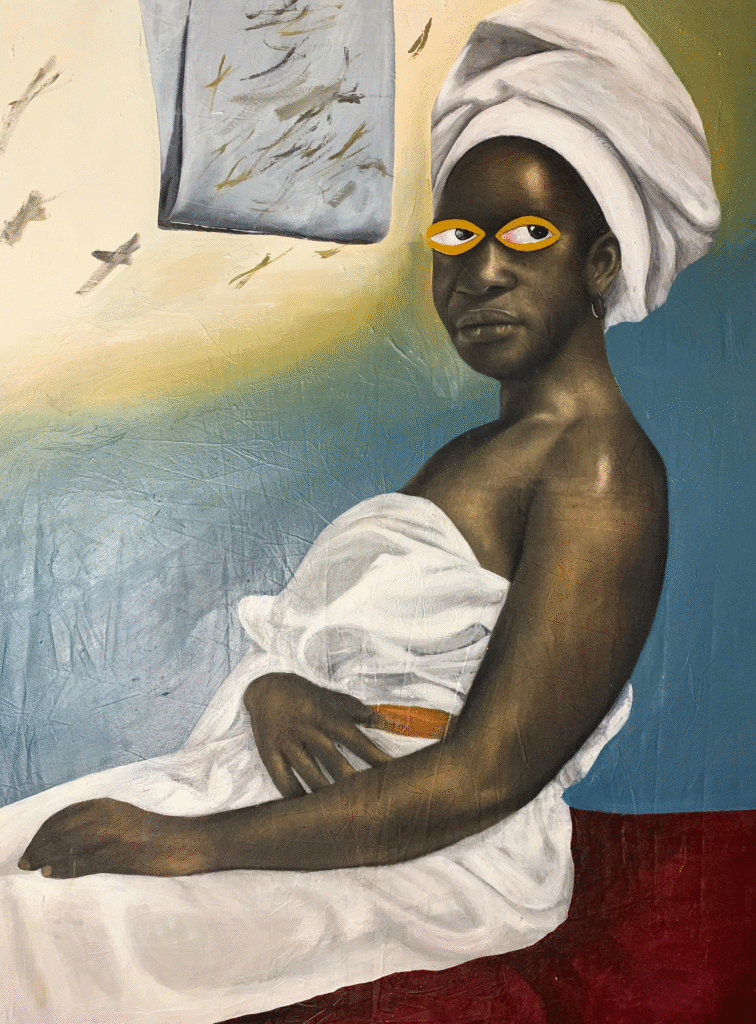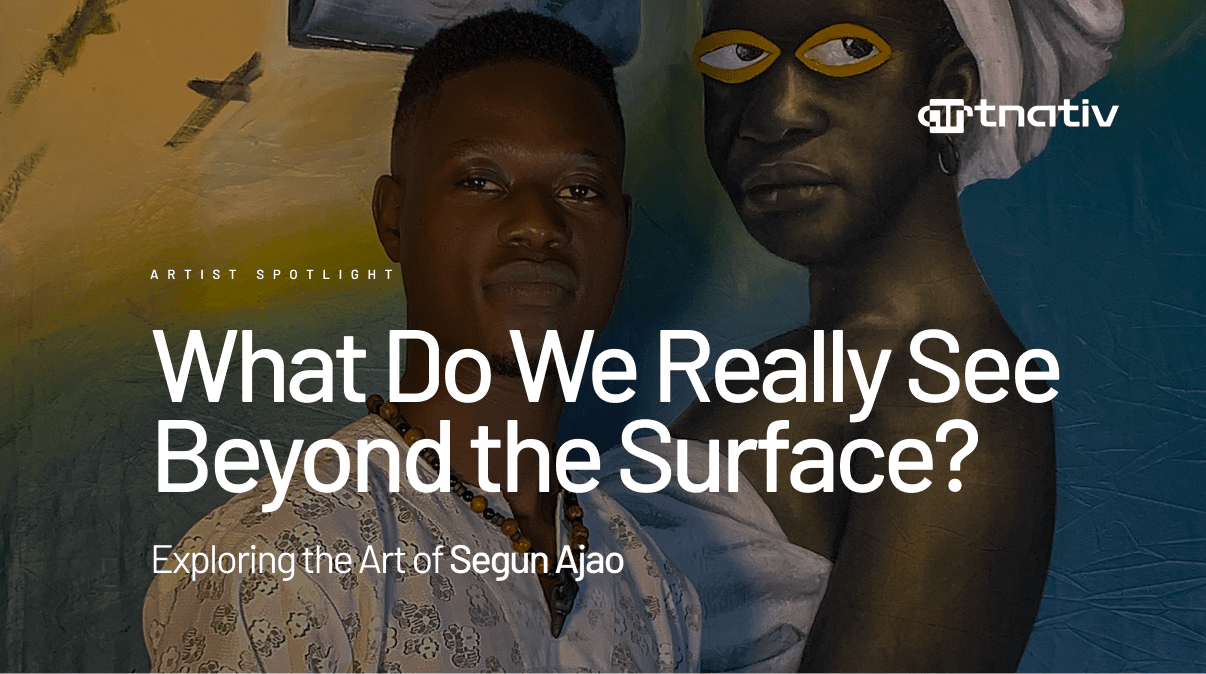Art, in its truest form, is more than what meets the eye. It is a dialogue — sometimes quiet, sometimes confrontational — between the visible and the invisible, the surface and the depths. Few contemporary Nigerian artists embody this balance as profoundly as Segun Ajao, whose work pushes viewers to pause, to look again, and to ask: what do we really see when we look beyond the physical?
Early Life and Beginnings
Born and raised in Ibadan, Oyo State, Segun Ajao discovered art as more than an expression of talent — it was a language. By the age of ten, he had already begun sketching forms that would evolve into a deeply symbolic practice. What began as a child’s exploration of line and shape matured into a lifelong pursuit of depth, meaning, and spiritual resonance. His early environment — vibrant, textured, and steeped in Yoruba culture — offered him a backdrop of identity and memory that would later seep into his work.
The Signature Style: Eyebrows as Symbols
Perhaps the most striking feature of Segun’s art is the abstract, sculpture-like eyebrows that have become the hallmark of his figures. More than an aesthetic flourish, these eyebrows carry symbolic weight. They represent what he calls the “internal gaze” — intuition, emotional perception, and the unseen layers of human experience.
In an art world where eyes are often thought of as the “windows to the soul,” Segun flips this narrative, placing emphasis not on sight as outward observation but as inward reflection. His figures look not at us, but within themselves — drawing the viewer into an introspective experience of their own.

Blending Realism with Abstraction
Segun’s mastery lies in his ability to fuse realism — the precise, anatomical rendering of the human form — with conceptual abstraction. His works are grounded in familiarity yet unsettled by symbolic distortions, forcing us to reconsider what we take for granted as “real.”
This tension makes his figures appear as though they are suspended in a liminal state — mid-thought, mid-transition, mid-revelation. The body becomes a threshold, balancing between voice and silence, flesh and form, presence and absence.
Inspirations and Identity
Deeply rooted in African identity, Segun draws inspiration from Yoruba philosophy, African spirituality, and the evolving dialogue of contemporary expression. His art is not nostalgic, nor does it lean on cliché; rather, it bridges tradition and modernity. By infusing spiritual introspection into his practice, he creates works that feel both personal and universal.
To view a Segun Ajao piece is to enter into an exploration of dualities: the modern and the ancestral, the tangible and the mystical, the self and the collective.
The Figures as Mirrors
Segun’s figures are not passive portraits. They are mirrors. Each piece asks the viewer to look inward, to wrestle with their own unseen truths. In this sense, his art is not only visual but participatory — requiring presence, reflection, and sometimes discomfort.
His figures embody a question: Who are we when the layers of the physical fall away?

An Invitation to Dialogue
Ultimately, Segun Ajao’s work is an invitation. It invites us into silence, into stillness, into dialogue with the self. His art challenges the habit of consuming images at face value. Instead, it asks us to see differently, to listen to what is not spoken, and to feel what is not shown.
This is why his work resonates: it is not simply about aesthetics, but about truth. Not the truth of surfaces, but the truth we encounter when we dare to look beyond.
Closing Thought:
Segun Ajao is not just creating images; he is shaping a language of depth, silence, and vision. In every figure, in every symbolic eyebrow, he reminds us that art is not only something to look at — it is something to look through.

